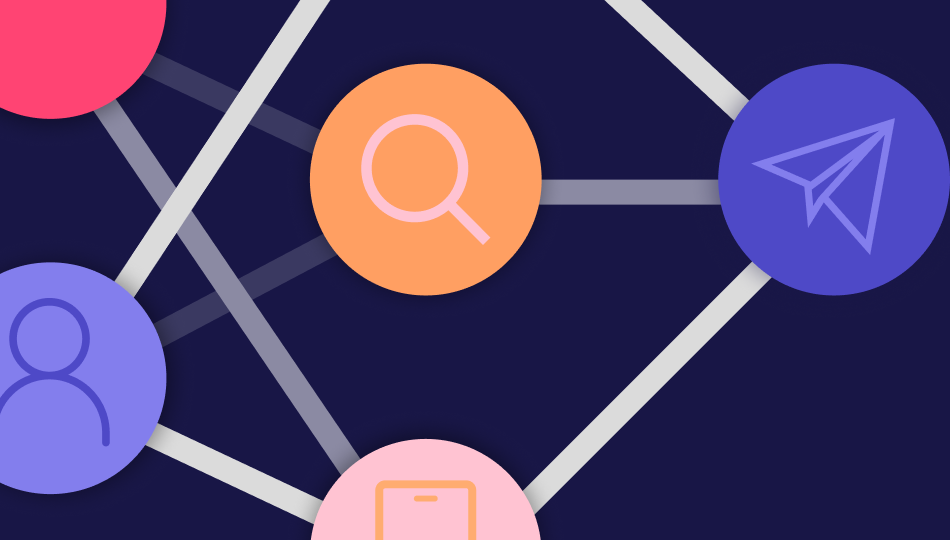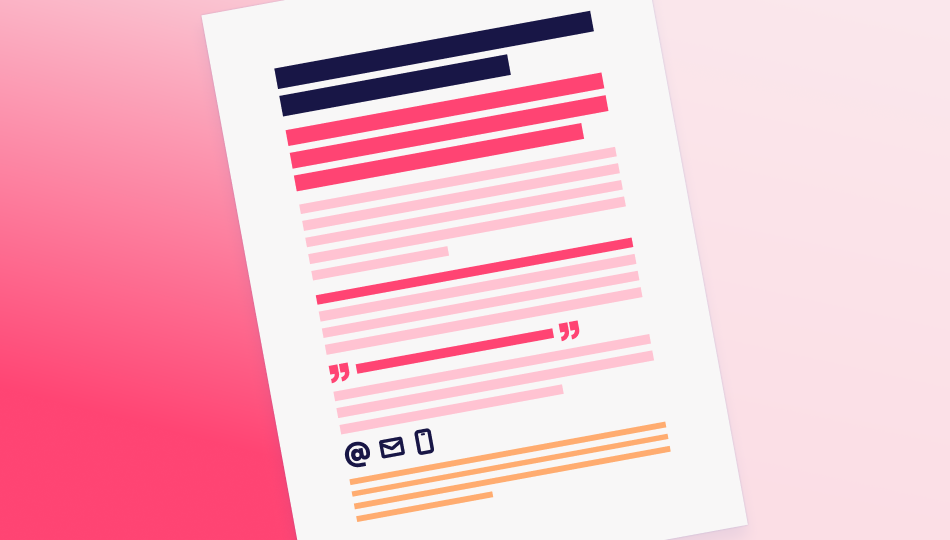The PR industry went through a massive shift over the last couple of decades.
20 years ago, PR professionals spent their days scouring newspapers while glued to their phones to get their stories out. Thus, leaving no room for other essential tasks such as:
- Analyzing what the competition is doing
- Scanning the market to build relationships with new potential partners
Because PR professionals were busy getting their stories out for companies, brands were the ones doing all the talking and people were the ones listening.
Brands weren’t listening to what their audiences were saying because they didn’t have to.
Then, the 2000s brought us social media.
With this, the tables turned.
Social media established a two-way conversation between brands and their audience. Finally, people could talk to and about brands, publicly.
By breaking the walls standing between brands and their audience, social media tweaked the rules, leaving brands with very little control over their core message.
So many people have been talking ever since. 90% of the data that exists today was created over the last two years!
What’s even more impressive is that an average day on social media sees over 500 million tweets, 350 million images uploaded on Facebook, and about 95 million pictures and short films on Instagram. It represents almost a billion daily interactions (and I’m excluding YouTube, Pinterest, Snapchat, and others).
It’s very likely there are many conversations online that mention your brand, competition or market. However, there’s no way we – humans – can process all that information shared to identify what’s relevant.
What I’m getting at is this: marketing and PR professionals gather so much data that they can’t get their eyes on what matters to them.
It’s is one of the biggest business challenges most companies and PR professionals are facing today. To stay on top of everything PR execs need to be listening to the conversations around their brands.
Some brands may think that social listening is still a ‘nice-to-have’ activity. In reality, it has become an instrumental part of your PR strategy.
You need to identify and jump in the relevant conversations about your brand to keep control. Something social listening can help you achieve.
In this blog post, I’ll explore five reasons why PR professionals need to integrate social listening into their strategy.
1. Social Media is a PR medium
Social media was created to share stories and messages with people, which is what PR does.
There are a few key ways that we can view social media as a PR medium. It allows us to:
- Identify people to talk to
- Draft a story
- Share your story
- Measure its amplification
So, it’s not so different from the PR channels we already use. Different media. Same process.
What’s more the majority of journalists use social media. Two out of three use it daily to identify stories they want to cover. As many newsworthy stories are discovered on social media, you should use social media to reach out to journalists when you can’t get a hold of them on the phone or via email.
Besides, a lot of your audience is on social media too, so share your stories on the channels that matter to your audience. Chances are, a journalist not following your brand could see your news shared by someone in their network.
What’s more, being active on various social media not only helps brands connect with all their audiences but also helps them ‘control’ how their brand messages echo online.
With the power to listen and filter through billions of conversations every day, you can learn so much from social media.
2. Social media is the land of opportunities
As mentioned earlier, PR has been a one-way street for a very long time
On top of this, brands were only communicating to share big news or to advertise new products or services. There was no conversation.
As people are having conversations about brands, and with brands, every moment of every day, things have dramatically changed.
Now, PR professionals can play this new game two ways:
- They can wait around to react to the stories they put out
- They can use a social listening tool to identify the most relevant conversations:
- About trending topics that they can provide their insight on
- About their brand or industry to build new relationships with influencers and journalists.
From listening to the competition, learning about your audience, identifying influencers, social listening helps PR pros take a step back and see the bigger picture.
Learn from your competitors
Because social media is mostly public, everything that your competitors are doing is there for you to see, you just have to track it. Here are a few things you can monitor:
- What kind of events do they host or attend?
- Are they announcing new products or services?
- Who are they sharing their news with?
- Who ends up talking about them on social media?
If a competitor’s press release is generating huge, positive buzz in your market, there must be something they did right. When this happens, you’ll want to dig a little deeper to see what they did.
Social listening can help you identify their strategy. Using a tool like Mention, you can see where the news has spread, how it is being discussed and who is talking.
Your competitors likely face the same challenges you do. So listening to what they do will not only give you new ideas, it will help you adjust the direction of your PR strategy. To put it bluntly, see what’s working for them and use it!
Now, you should not build your PR strategy solely by copying your competitors of course. Social listening can also help you learn a lot about your audience, and you need to know what they think when building a PR strategy.
Learn about your audience
Did you know 93% of internet users refer to online reviews before committing to buying something or subscribing to a service?
It means that, ultimately, potential customers won’t listen to you, but what is being said about you. Your work then, as a PR professional, is to make sure the echo sounds positive.
Now, don’t panic if a social listening analysis reveals a lot of negative comments. Instead, try to see it more as an opportunity for your entire organization. 25% of companies say ideas and feedback they get from social listening helps them improve their product.
So by listening on social media, your colleagues will have a clearer vision of what they should prioritize, and you will have a clearer idea of what you should focus your communication on.
Connect with key influencers
Another significant benefit of social listening for PR is to identify influencers.
“Influencers are social media content creators who are often dedicated to a niche market. We call them so because their voices are carefully listened to by their loyal followers.”
– Cyril Codron, Head of Product, Mention.
They’re usually paid or compensated in other ways to promote a brand (unless you manage to build an organic influencer marketing strategy). But sometimes, influencers are easier to work with than journalists to spread your message quickly.
Journalists tend to get hundreds of pitches about all types of subjects every day, whereas influencers focus on contributing to conversations around their niche. This means that the right influencer to amplify your brand’s story should already have a strong connection with audiences similar to yours.
For this reason, you need to be very specific when reaching out to influencers to spread your message. But how do you find the right ones for your company?
A good social listening tool for PR will help you identify influencers who are already talking about your brand or your industry. And once you’ve identified relevant influencers and journalists on social media, all you have to do is reach out to start a relationship with them.
3. Social Media is where your audiences are talking
In this day and age, brands must interact with their audience. 90% of customers are more likely to recommend a product or subscribe to a service after interacting with a brand on social media.
Now, when someone @mentions your brand on social media, he or she expects you to react.
Yet, most people won’t @mention your brand directly.
Most of the time, they will talk about you and not to you and, therefore, won’t be expecting you to join the conversation. But this is precisely why you should try to be a part of the conversation – you could pleasantly surprise your audience!
Joining such discussions is the key for you to:
- Rectify any miscommunication about your brand
- Turn prospects into customers and customers into advocates
In the following example, Oreo proactively jumps in a conversation after someone talked about “Oreos.” They were likely using a social listening tool that notifies them not only when their brand gets @mentioned, but also when someone mentions keywords related to them.
Pretty cool way to build relationships with your audience, right?
It’s fair to assume Oreo’s communication team created a campaign associating their brand and “Love, Simon”.
Remember, we – humans – are social animals and we love attention (especially when brands we love are involved).
Social listening is helpful when it comes to spreading brand love, but it’s just as effective when it comes helping another equally important task: controlling PR crises.
4. Social media is where PR crises often start
It only takes one wrong tweet to launch a PR fire.
Remember social media gave businesses a lot more opportunities to communicate with their core audience, but they also lost the full control of their message in the process.
A recent study shows 55% of consumers use social media to complain about brands.
If you’ve been through a PR crisis before, you know how dangerous an angry social media user can be. In minutes, your reputation can be damaged or, worse, have your company shares drop millions.
We’ve seen it with Dove, Nivea or more recently with H&M.
A customer may share discontent about your PR campaign on social media, get tons of retweets, and before you know it – you’re facing a proper trial.
When this happens, you definitely shouldn’t ignore it and look the other way.
Instead, use social listening to defuse the PR bomb and – when applicable – turn haters into brand lovers.
Control the damage
When someone leaves a negative review about your brand, products or services on social media, things can go seriously wrong very quickly. Ignore these comments, and you leave room for speculation. Social media users are creative and may use this bad publicity to make fun of your brand and seriously harm your credibility.
If you do enter these conversations and get to the bottom of the complaints, you’re taking ownership of the situation and showing that you care.
Turn haters into lovers
While community management is not a part of a PR professional’s job, they still need to be aware of people suddenly complaining about their brand.
It’s not because someone complains about your brand that he or she dislikes it. They may just be experiencing technical or logistical issues with your company.
For example, I use Amazon a lot. When my orders are not delivered on time, I @mention their customer service on social media to understand why this is happening and how they can fix it quickly. And they always react quickly and deal with my complaints. At the end of the day, I keep on shopping there because I know they never let me down. They don’t ignore complaints. Instead, they deal with them and keep me happy.
In short, PR professionals should use social listening to gain back some of the control they lost to social media.
5. Social listening helps you understand the impact of your work
Last but not least, social listening is a necessary addition to your strategy if you want to measure and understand the effects of all your PR efforts.
Measure the amplification of your stories
When journalists and influencers share your stories, it’s very likely people will discuss it on social media. You need to know what they’re saying as well as how many people are talking about it.
If you don’t know who shares and reads your story, or how much is being shared, how will you know if your PR campaign was successful?
Back in the day, PR pros needed to collect newspaper clippings to prove their campaign’s ROI. With the onset of social media, they now need to measure how much and what is being said.
As an example, I listened to the latest Apple product launch (September 12th), and it turns out most of the noise came from Twitter. Here’s a glimpse of my Apple Watch analysis
By knowing metrics such as the volume of mentions, the overall sentiment, and which influencers were mentioning your brand, you can understand how your PR campaign performed.
Better be safe than sorry
Thousands or even millions of people may be talking about your brand right now, and you may not even know about it. Therefore, you have no control over what they are saying.
Doing social listening can help PR professionals tremendously, from spreading their story quickly, managing PR crises, to measuring campaign ROI. If you haven’t already started, what are you waiting for?
I’d love to hear your thoughts on this. Are you using a social listening tool to strengthen your PR efforts? Feel free to contact me.



